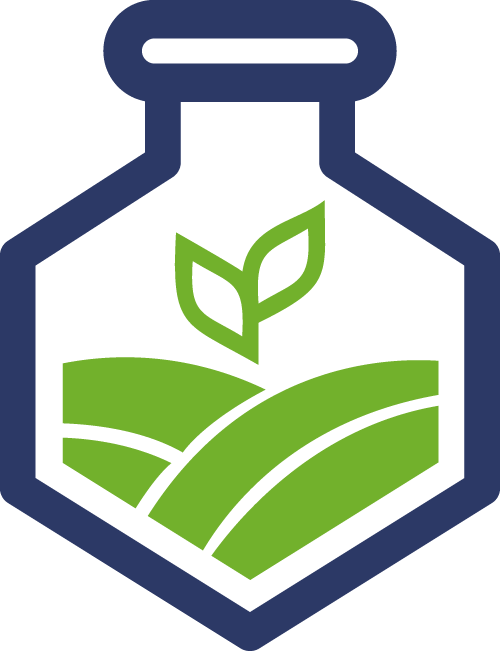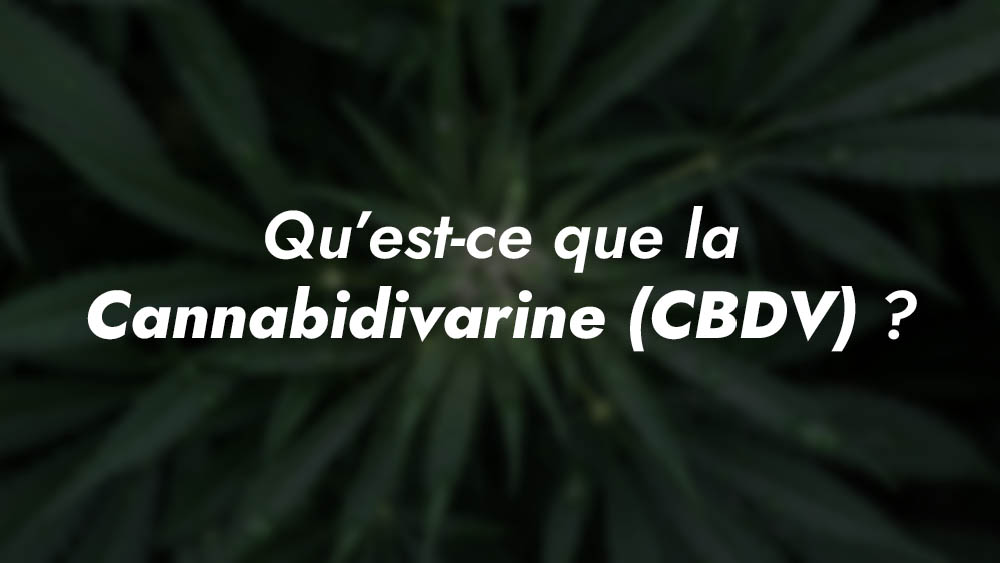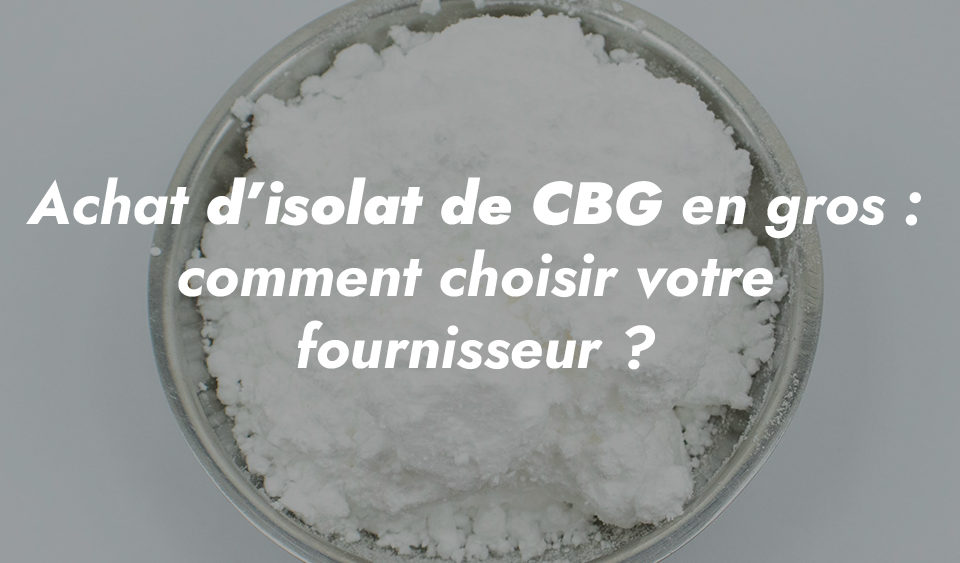
When Tilyo and Green Exchange combine their expertise
March 31, 2022
#4 - On parle de nous - La Voix Du Nord
June 29, 2022CBG, CBN, CBC, HHC... Our industry is constantly seeing new cannabinoids appear, and that's what makes our job so interesting! Today, our magnifying glass is on Cannabidivarin (CBDV), a cannabinoid with no psychotropic effects - and legal - that can already be enjoyed in certain varieties of hemp flowers and in the composition of CBDV-enriched oils.
CBDV: a cannabinoid closely related to CBD?
CBDV is one of the 120 or so phytocannabinoids found in cannabis. It is found - in small quantities - in all strains, but Indicas are said to be more concentrated than Sativas. It would also seem that CBDV is better synthesized in flowers with low THC and high CBD levels. However, the biochemical link between CBD and CBDV remains unclear.
Chemical formula and synthesis
The vast majority of cannabinoids are descended from Cannabigerol (CBG), and it's almost certain that this is also the case for CBDV. However, we still don't know how it's synthesized.
What is known is that CBD and CBDV share a similar molecular structure, which is why these two non-psychoactive cannabinoids are candidates for treating the same families of diseases.
However, CBD and CBDV are two distinct molecules, differing by just one carbon atom. This may seem small, but this carbon chain determines in part the receptors in our endocannabinoid system with which CBDV has an affinity. More on this later.
In any case, with its propyl carbon chain, CBDV belongs to the "Varin Cannabinoid " family, which also includes THCV, CBGV and CBCV, among others. So CBDV isn't all it's cracked up to be!
Safety of CBDV
CBDV, like all other cannabinoids, was discovered in the early 1970s, but it's only very recently that the scientific community has been allowed to take a serious look at its potential properties.
The renowned British laboratory GW Pharmaceutical has shown particular interest, notably in the development of a CBDV-based treatment for epilepsy. On this occasion, studies (1) have demonstrated its safety, as well as the absence of side effects, even when trials were carried out with maximum doses.
CBDV - like CBD and all cannabinoids - is harmless to humans, has no psychotropic effects (except THC) and is potentially full of therapeutic virtues.
CBDV and the endocannabinoid system: effects on the body
All cannabinoids act - more or less directly - on our endocannabinoid system (ECS). This is why cannabis is a medicinal plant with a thousand virtues. In fact - to give you a quick reminder - the SEC is a vast network of receptors distributed at strategic points in our body, to maintain it in a state of homeostasis.
»En biologie et en systémique, l’homéostasie est un phénomène par lequel un facteur clé est maintenu autour d’une valeur bénéfique pour le système considéré, grâce à un processus de régulation. » (Source : Wikipédia)
Affinity of CBDV with TRPV receptors
The famous THC/CBD duo act - each in their own way - on the two main types of SEC receptor, namely CB1 and CB2. CBDV, on the other hand, does not appear to have any particular affinity with these neuroreceptors. On the other hand, preliminary research suggests that it binds to TRPV receptors.
We'll see what this means from a medical point of view a little later, but for the average consumer, CBDV could help with :
👉 Muscle stiffness and contractures ;
👉 Chronic pain ;
👉 Headaches and migraines.
GOOD TO KNOW
TRPV receptors are sensory sensors located in muscle tissue, in the epidermis and partly in the central nervous system. They send a nervous message to the brain, triggering the inflammatory reaction in response to a thermal stimulus.
CBD also acts on our body's TRPV receptors . In this respect, the two cannabinoids have similar properties.
However, CBD's affinity with CB1 and CB2 receptors makes it more effective for treating ailments such as insomnia, stress and anxiety, while CBDV would be more useful for treating ailments related to nociceptive pain such as those mentioned a little earlier.
CBDV and AG-2 synthesis
At the same time, research has revealed another interesting biological phenomenon: CBDV is able to regulate the synthesis of AG-2, one of the two cannabinoids produced in our bodies.
GOOD TO KNOW
Our bodies naturally and spontaneously produce two endocannabinoids: AG-2 and Anandamide. Together, they act on our SEC and work to maintain our body's physiological functions in a state of optimal balance.
The function of Anandamide - which means "bliss" in Sanskrit - is better known than that of AG-2. However, it is known that this endocannabinoid can bind to CB1-type receptors.
These receptors are mainly located in our central nervous system - the brain - and therefore, indirectly, CBDV could be beneficial in case of :
👉 Stress ;
👉 Anxiety ;
👉 Insomnia ;
👉 Depressive state.
It's easy to understand the processes mobilized by CBDV to induce an increase in AG-2 synthesis: in fact, CBDV interferes with the production of the enzyme required for AG-2 synthesis, diacylglycerol lipase.
Even so, it remains unclear to what extent the virtues mentioned can be felt by consumers.
Potential therapeutic benefits of CBDV
As mentioned above, GW pharma has taken a keen interest in the potential therapeutic applications of CBDV. Their research began in the early 2000s and focused primarily on developing a treatment for epilepsy.
Epilepsy
GOOD TO KNOW
GW Pharmaceuticals - now Jazz Pharmaceuticals - is a household name in the industry, as it is no less than the laboratory that developed the first FDA-approved cannabis oil-based treatment. Epidiolex, which contains mainly CBD, is still today an effective treatment for reducing the number and intensity of seizures caused by certain forms of epilepsy.
During 2015, GW Laboratories obtained approval from the relevant authorities to file a patent for a new cannabis-based medicine to treat epilepsy, GWP42006. This time, the main ingredient is not CBD, but CBDV.
It was during the development studies for this treatment that researchers demonstrated the safety of the cannabinoid. They were also able to show that CBDV - via its indirect link with CB1 receptors - is able to reduce the intensity of epileptic seizures induced by three forms that CBD cannot treat .
Further studies are needed to better understand CBDV's anticonvulsant property and thus develop a treatment. So far, tests have been carried out only on rodents.
In any case, these observations have paved the way for other treatment-orphan diseases.
Duchenne muscular dystrophy (DMD)
Duchenne muscular dystrophy is a genetic disease that causes progressive muscle degeneration .
As we explained earlier, CBDV is able to bind to TRPV receptors, which, it should be remembered, are found in muscle tissue among other areas. Studies (2) - currently conducted on rats - have indeed shown that CBDV is capable of increasing mobility, while reducing disease-induced muscle stiffness.
It's worth noting that this study - and its encouraging results - concerns not only CBDV, but also CBD. CBD, which many people like to consume after a sports session, to promote muscle recovery.
Rett syndrome
This neurological disease affects brain function. Symptoms - which appear in the first few months of life, exclusively in little girls - include epileptic seizures, motor disorders and severe intellectual impairment.
CBDV's affinity for CB1 receptors - found mainly in the brain - and the promising results observed in epilepsy trials make it a natural candidate for treatment. Indeed, observations (3) tend to confirm this hypothesis: mice treated with CBDV regained some of their mobility and other cognitive functions .
However, as with all the studies discussed here, there are still gaps in our understanding of the physiological processes involved.
Autism spectrum disorders (ASD)
Rett syndrome is sometimes considered a form of autism. In so doing, the aforementioned observations laid the groundwork for studying the potential benefits of CBDV on people with ASD. And the findings are equally encouraging.
Again, we'll spare you the technical - and tedious - details of the study (4) in question (but feel free to go and consult it), simply put, the brain of a person with ASD was scanned after taking CBDV, and the scientists were able to observe that levels of one of the proteins responsible for miscommunication between neurons (GABA) tended to drop in certain areas (notably the prefrontal area).
All in all, it would seem that CBDV can improve cognitive function, but we'll have to wait for further data before a treatment can be developed.
CBDV products and consumption
Given its safety and non-psychotropic nature, CBDV has every chance of success in the hemp product market. In fact, CBDV-enriched oils are already appearing, as are flower varieties specially created to promote the synthesis of the phytocannabinoid .
Given its safety and non-psychotropic nature, CBDV has every chance of success in the hemp product market. In fact, CBDV-enriched oils are already appearing, as are flower varieties specially created to promote the synthesis of the phytocannabinoid .
That said, it should be remembered that this cannabinoid is naturally present in very small quantities in flowers. Extracting it is therefore costly, and developing CBDV-concentrated products is likely to be complex...
For the time being, the best way to enjoy the effects of CBDV is undoubtedly CBDV-concentrated flowers. The famous Dutch seed bank - Dutch Passion - is said to be the very first to have offered such a variety. Its CBD-Victory has similar levels of CBDV and CBD, between 4% and 6% each.
Meanwhile, in Green Exchange's greenhouses, the first CBDV-concentrated flowers are about to be picked! We'll let you know more as soon as these little nuggets are ready to be enjoyed.
Sources for this article on CBDV:
(1) Cannabidivarin-rich cannabis extracts are anticonvulsant in mouse and rat via a CB1 receptor-independent mechanism (2 )Effects of non-euphoric plant cannabinoids on muscle quality and performance of dystrophic mdx mice (3) Chronic treatment with the phytocannabinoid Cannabidivarin (CBDV) rescues behavioural alterations and brain atrophy in a mouse model of Rett syndrome (4) Effects of cannabidivarin (CBDV) on brain excitation and inhibition systems in adults with and without Autism Spectrum Disorder (ASD): a single dose trial during magnetic resonance spectroscopy





